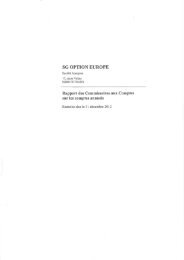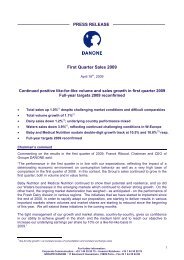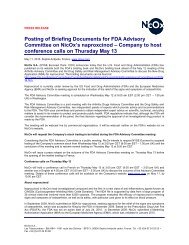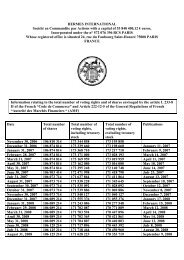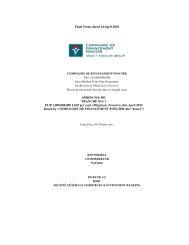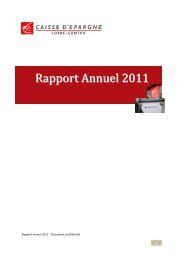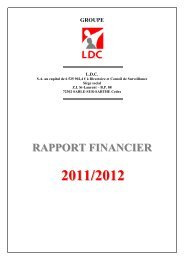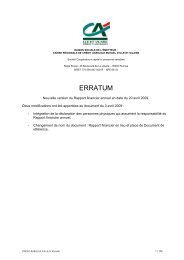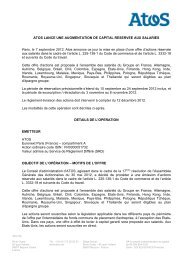Financial Reporting - Rexel
Financial Reporting - Rexel
Financial Reporting - Rexel
Create successful ePaper yourself
Turn your PDF publications into a flip-book with our unique Google optimized e-Paper software.
When the calculation results in plan assets exceeding the Group’s liabilities, the recognized asset is limited<br />
to the net total of any unrecognized actuarial losses and past service costs and the present value of any<br />
currently available future refunds from the plan or reductions in future contributions to the plan.<br />
The current and past service costs are presented in the income statement as part of the personnel expense.<br />
The interest expenses (income) relating to the unwinding of the discounting of the defined benefit obligation<br />
and the expected return on plan assets are presented in financial income and expenses.<br />
Other long-term benefits<br />
Long-term benefits mainly include jubilees or long service leaves. The Group’s net obligation in respect of<br />
long-term benefits, other than post-employment plans, is the amount of future benefit that employees have<br />
earned in return for their service in the current and prior periods. The value of the obligation is determined<br />
using the projected unit credit method. This amount is discounted at the rate based on high quality corporate<br />
bonds with maturity dates close to those of the Group’s obligations prevailing on the balance sheet date.<br />
Actuarial gains and losses are immediately recognized in the income statement.<br />
2.15 | Share-based payments<br />
Free shares and stock option programs allow the Group employees to acquire shares of the Group entities.<br />
The fair value of options granted is recognized as a personnel expense with a corresponding increase in<br />
other reserves in equity (when the plan qualifies as equity-settled) over the period during which the<br />
employees become unconditionally entitled to the options (the vesting period). The expense is based on<br />
Group estimates of the acquired equity instruments in accordance with conditions of granting.<br />
The fair value is measured at grant date using a Black & Scholes model or a binomial model in accordance<br />
with the characteristics of the plans.<br />
The proceeds received net of any directly attributable costs are recognized as an increase in share capital<br />
(for the nominal value) and share premium when equity instruments are exercised.<br />
2.16 | Provisions<br />
A provision is recognized in the balance sheet when the Group has a present legal or constructive obligation<br />
as a result of a past event, when it is probable that an outflow of economic benefits will be required to settle<br />
the obligation and when the amount can be estimated reliably.<br />
If the effect of time value is material, provisions are determined by discounting the expected future cash<br />
flows at a rate that reflects current market assessments of the time value of money and, when appropriate,<br />
the risks specific to the liability.<br />
Provision for restructuring<br />
A restructuring is a program that is planned and controlled by management that materially changes either the<br />
scope of the business or the manner in which that business is conducted.<br />
A provision for restructuring is recognized when the Group has approved a detailed and formal restructuring<br />
plan, and the restructuring either has commenced or has been announced publicly. Future operating losses<br />
are not provided for. Certain restructuring expenses are presented in “Other expenses” (see note 2.18).<br />
Restructuring costs principally include personnel costs (severance payments, early retirement costs, notice<br />
time not worked), branch closure costs, and indemnities for the breach of non-cancellable agreements.<br />
Onerous contracts<br />
A provision for onerous contracts is recognized when the expected benefits to be derived from a contract are<br />
lower than the unavoidable cost of meeting its obligations under the contract.<br />
Provisions for disputes and litigations<br />
Provisions for disputes and litigation include estimated costs for risks, disputes, litigation and third party<br />
claims, and the probable costs associated with warranties given by the Group in the context of the disposal<br />
of non-current assets or subsidiaries.<br />
37



